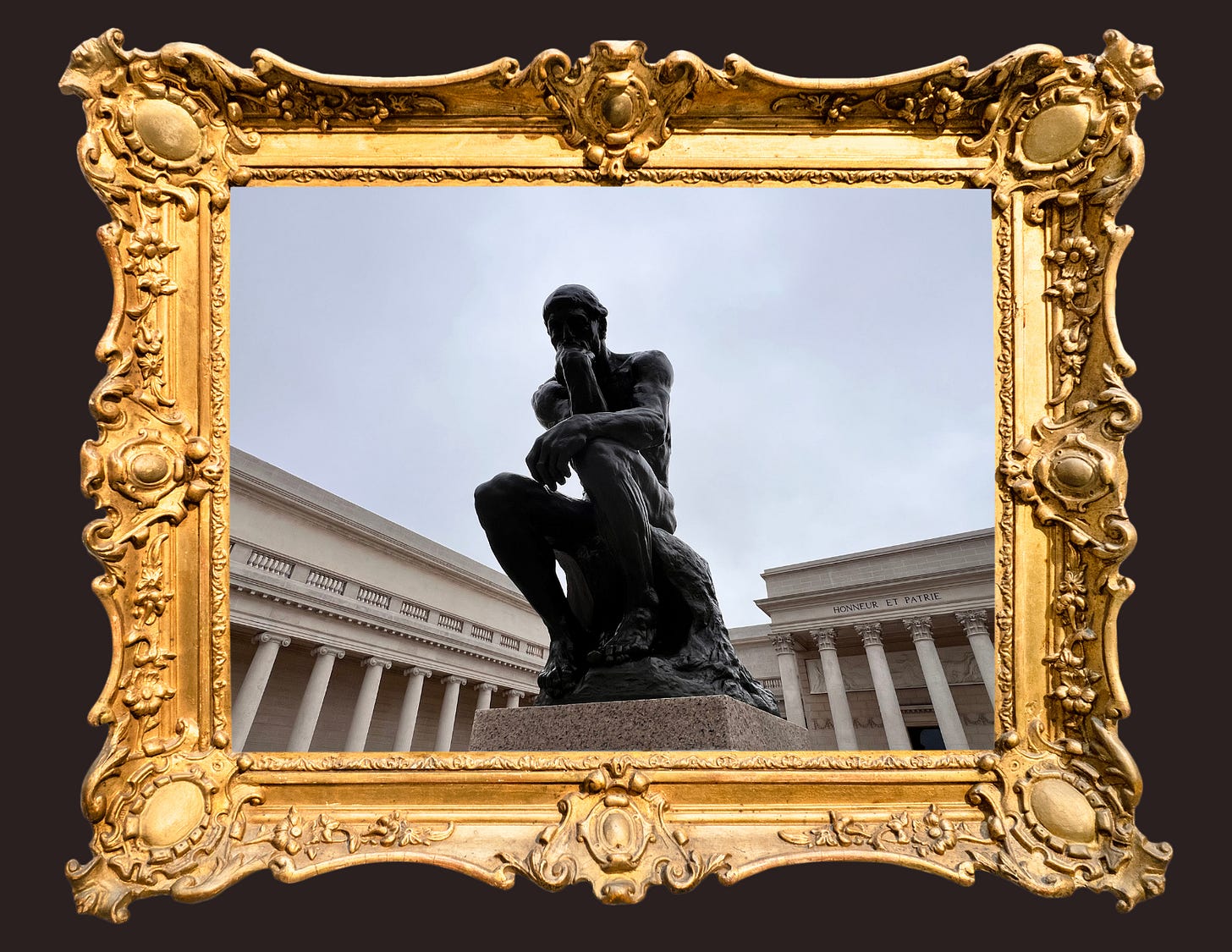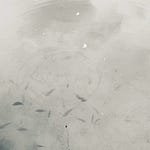A “Portrait of a Moment” this week; an invitation to a thoughtful pause.
3 Things:
Last week I traveled to Northern California (thus my absence here) and I read The Serviceberry by Robin Wall Kimmerer on the plane. I’ll add it to The Museum Library. She asked some thought-provoking questions within. Here is one that I really loved: “When was the last time you drank wild water?”
A reminder: Will you be in Berlin on September 25? If so, consider joining a donation-based dinner “What Does it Take to Trust Again?” celebrating collaboration + trust and The Journal Project & The Oneliness Project. Get Your Ticket. Will the journals arrive? ✨ (We don’t know! But it is fun to watch them pop-up around the world in places like…London, Vancouver, Chicago, Omaha, Placentia, Joigny, France, Sonderberg, Denmark, Kansas City, Phnom Penh, Santa Cruz de Tenerife, Barcelona, Sydney, Australia, Queens, Lodz, Poland, Sweden, Switzerland, Australia…)
I invite you to write a letter to a friend. (Just a few sets left).
For now, to accompany The Portrait, here is a passage from a book that I return to often: The Courage to Create by Rollo May. It is also in The Museum Library. Today, his thinking about moral courage. It is from Chapter One: The Courage to Create.
—Shannon Mullen O’Keefe
“3. Moral Courage
A second kind of courage is moral courage. The persons I have known, or have known of, who have great moral courage have generally abhorred violence. Take, for example, Aleksander Solzhenitsyn, the Russian author who stood up alone against the might of the Soviet bureaucracy in protest against the inhuman and cruel treatment of men and women in Russian prison camps. His numerous books, written in the best prose of modern Russia, cry out against the crushing of any person, whether physically, psychologically, or spiritually. His moral courage stands out the more clearly since he is not a liberal, but a Russian nationalist. He became the symbol of a value lost sight of in a confused world—that the innate worth of a human being must be revered solely because of his or her humanity and regardless of his or her politics. A Dostoevskian character out of old Russia (as Stanley Kunitz describes him), Solzhenitsyn proclaimed, “I would gladly give my life if it would advance the cause of truth.”
Apprehended by the Soviet police, he was taken to prison. The story is told that he was disrobed and marched out before a firing squad. The purpose of the police was to scare him to death if they could not silence him psychologically; their bullets were blanks. Undaunted, Solzhenitsyn now lives as an exile in Switzerland, where he pursues his gadfly role and levels the same kind of criticism at other nations, like the United States, at the points where our democracy obviously stands in need of radical revision. So long as there exist persons with the moral courage of a Solzhenitsyn, we can be sure that the triumph of “man, the robot” has not yet arrived.
Solzhenitsyn’s courage, like that of many persons of similar moral valor, arose not only out of his audaciousness but also out of his compassion for the human suffering he saw about him during his own sentence in the Soviet prison camp. It is highly significant, and indeed almost a rule, that moral courage has its source in such identification through one’s own sensitivity with the suffering of one’s fellow human beings. I am tempted to call this “perceptual courage” because it depends on one’s capacity to perceive, to let one’s self see the suffering of other people. If we let ourselves experience the evil, we will be forced to do something about it. It is a truth, recognizable in all of us that when we don’t want to become involved, when we don’t want to confront even the issue of whether or not we’ll come to the aid of someone who is being unjustly treated, we block off our perception, we blind ourselves to the other’s suffering, we cut off our empathy with the person needing help. Hence, the most prevalent form of cowardice in our day hides behind the statement ‘I did not want to become involved.’”1
The Courage to Create by Rollo May. First published as a Norton paperback 1994. Copyright 1975 by Rollo May











